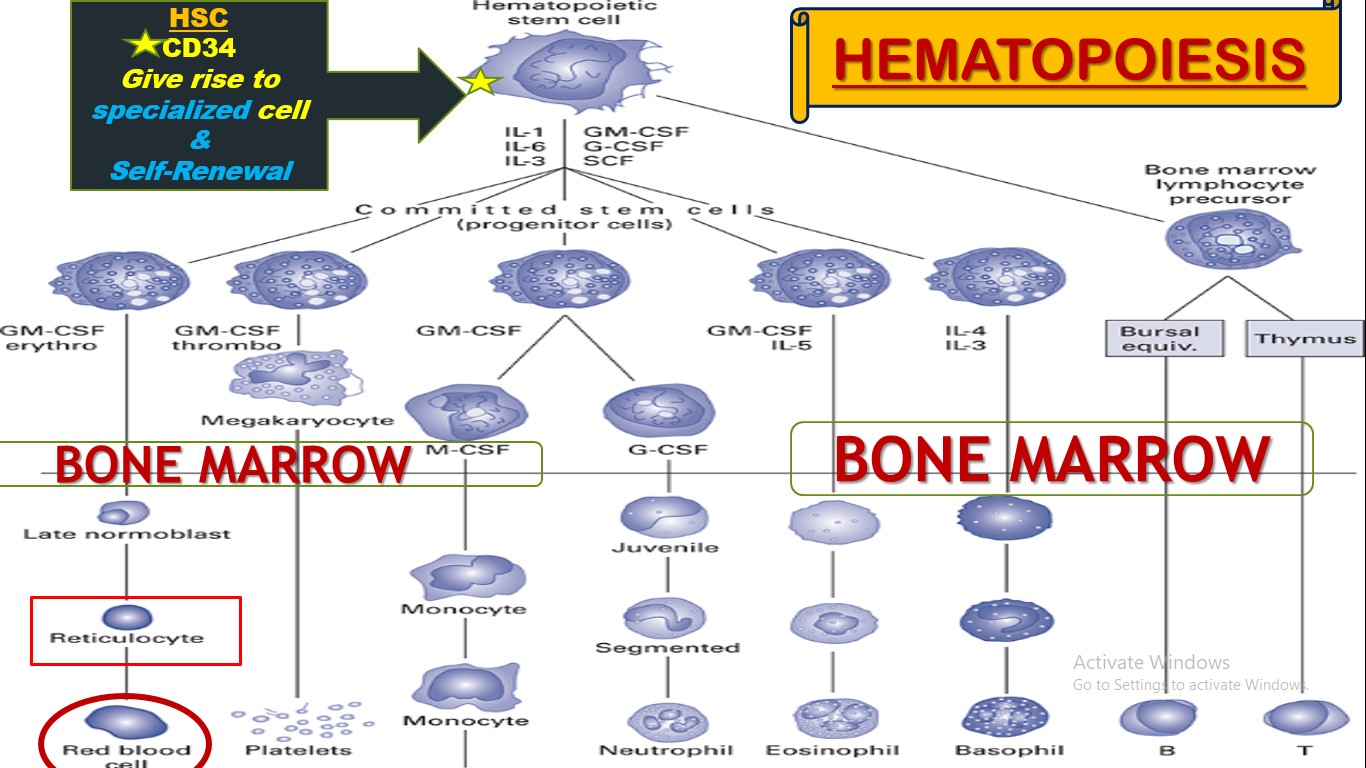
Erythropoiesis, Polycythemia and Anemia
Red blood cells, are the most abundant cells of the blood and have a biconcave shape that has a huge surface area to volume ratio. This is essential for gas exchange. Their major function is to transport hemoglobin, which in turn carries oxygen from the lungs to the tissues. Mature RBCs , also known as erythrocytes, result from finely regulated process (differentiation and maturation) called erythropoiesis that produces 2 million RBCs in healthy human adults. The process requires a healthy bone marrow, erythropoietin hormone and micronutirients (iron, vitamin B12 and folic acid). In healthy men, the average number of red blood cells per cubic millimeter is 5,200,000 (±300,000); in women, it is 4,700,000 (±300,000). Synthesis of hemoglobin (Hb) begins in the proerythroblasts in the bone marrow and continues even into the reticulocyte stage of the red blood cells. Therefore, when reticulocytes leave the bone marrow and pass into the blood stream, they continue to form minute quantities of hemoglobin for another day or so until they become mature erythrocytes. Inadquate synthesis of hemoglobin will lead to anemia ( decreased Hb or RBCs) and subsequently, decreased deilvery of oxygen to tissues.
Oxygen does not combine with the two positive bonds of the iron in the hemoglobin molecule. Instead, it binds loosely with one of the so-called coordination bonds of the iron atom. This is an extremely loose bond, so the combination is easily reversible. Iron is an essential element and humans need to ingest it. Inadequate intake may lead to decreased synthesis of hemoglobin and ultimaltely may lead to synthesis of relativey small and low count RBCs - microcytic anemia. Coversely, deficiency of B12 or folic acid may lead to anemia with large size RBCs (macrocytic anemia). Bone marrow aplasia means lack of functioning bone marrow. For instance, a person exposed to high-dose radiation or chemotherapy for cancer treatment can damage stem cells of the bone marrow, followed in a few weeks by anemia.
Different hereditary abnormalities of the red blood cells, such as sickle cell disease and hereditary spherocytosis, make the cells fragile, so they rupture easily as they go through the capillaries, particularly through the spleen. The life span of the fragile red cell is so short that the cells are destroyed faster than they can be
formed - leading to hemolytic anemias.
Polycythemia is a disease state in which the hematocrit or packed red cell volume s elevated. Polycythemia vera, is primary polycythemia, caused by a genetic aberration in the hemocytoblastic cells that produce the blood cells. Whenever the tissues become hypoxic because of too little oxygen in the breathed air, such as at high altitudes, or because of failure of oxygen delivery to the tissues, such as in cardiac failure, the blood forming organs automatically produce large quantities of extra red blood cells. This condition is called secondary polycythemia.
At the end of the lesson students will be able to learn;
1. Erythropoiesis and Hemoglobin
2. Iron metabolism
3. Anemia and its classification according to RBC indices
4. Primary and Secondary Polycythemia
5. Physiologic vs Pathologic polycythemia



